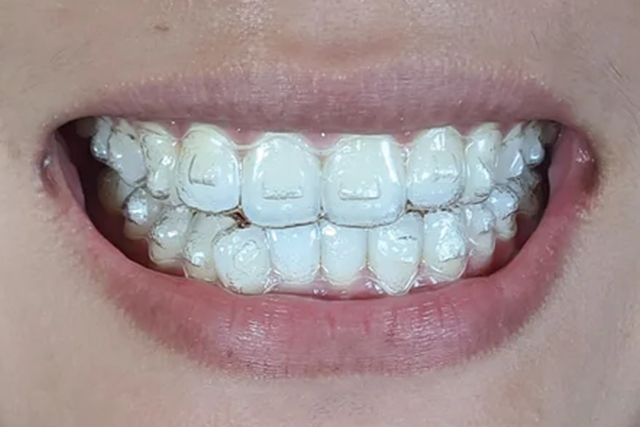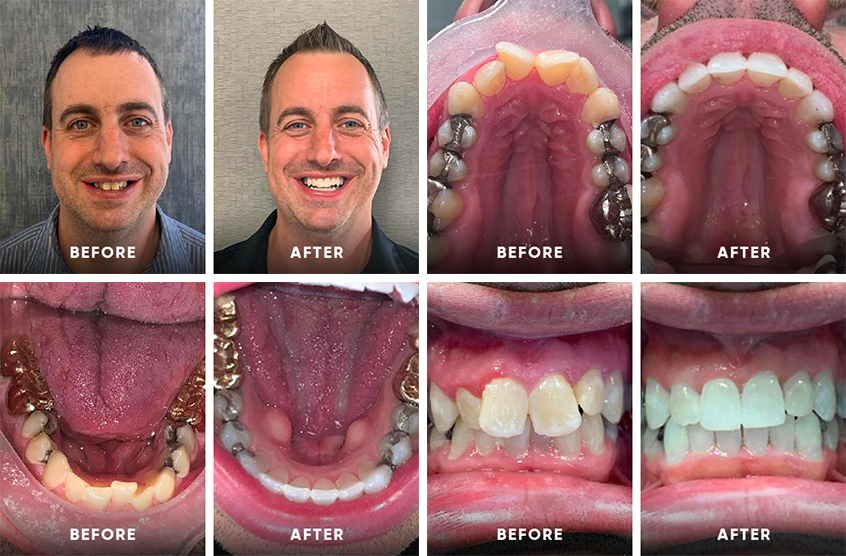Discover the Conveniences of Invisalign for a Perfect Smile Change
Wiki Article
Invisalign vs. Standard Dental braces: Which Alternative Is Right for You?
When thinking about orthodontic treatment, the selection between Invisalign and standard dental braces presents several essential variables that warrant cautious assessment. Invisalign offers a very discreet alternative with detachable aligners, while traditional braces offer a more visible yet effective solution for serious misalignment.Overview of Treatment Choices

On the other hand, traditional braces include metal braces and wires that are adhered to the teeth. This approach applies continual stress gradually to accomplish positioning. While effective for complicated orthodontic problems, typical braces call for regular visits for changes and can posture difficulties in keeping dental hygiene because of the trouble of cleaning up around braces and cables.
Both options have their qualities, and the choice usually rests on specific dental conditions, lifestyle choices, and person conformity. Inevitably, consulting an orthodontic expert is vital for determining one of the most suitable treatment strategy customized to specific requirements. Comprehending the subtleties of each option can significantly influence the total success of orthodontic treatment.
Visual Considerations
A substantial element influencing the selection in between Invisalign and conventional braces is the aesthetic allure each therapy uses. Invisalign aligners are crafted from clear plastic, making them essentially unseen when put on.On the other hand, standard braces consist of metal brackets and cords, which can be much more recognizable. While innovations in orthodontic modern technology have caused the growth of smaller sized braces and colored elastics, traditional dental braces still keep an even more conspicuous account. For some people, the presence of braces may hinder them from looking for required therapy.
Inevitably, the choice in between Invisalign and conventional dental braces might depend upon individual preferences concerning aesthetics. Clients that focus on discernment often lean towards Invisalign, while those who are less worried regarding visibility may go with standard braces. Recognizing the visual implications of each option is important for making a notified choice that aligns with one's way of life and preferences.
Comfort and Convenience

In terms of benefit, Invisalign aligners are detachable, making it possible for patients to appreciate their preferred foods without limitation and maintain ideal oral health. Cleaning and flossing are streamlined, as the aligners can be secured throughout these routines, whereas standard dental braces call for cautious maneuvering around wires and brackets.
Furthermore, Invisalign's dynamic system enables fewer orthodontic check outs. Patients usually receive multiple sets of aligners at the same time, which can streamline the therapy procedure and decrease time spent in the orthodontist's chair. On the other hand, typical braces necessitate regular adjustments, making them much less hassle-free for those with hectic timetables. Invisalign. Overall, the convenience and convenience of Invisalign make it an appealing selection for lots of individuals looking for orthodontic therapy.
Treatment Duration and Efficiency
While both Invisalign and conventional helpful hints dental braces are effective in remedying dental imbalances, the period of treatment can vary dramatically between both choices. Typically, Invisalign therapy can take anywhere from 12 to 18 months, depending upon the complexity of the case. The clear aligners work by slowly moving teeth into their wanted positions, and routine follow-ups with an orthodontist help make certain progression stays on the right track.
On the other hand, standard dental braces often require a longer dedication, usually varying from 18 months to 3 years. This results from their fixed nature and the use of wires and brackets, which can be much more effective for complicated cases and severe imbalances (Invisalign). The treatment performance of traditional braces is well-documented, as they enable exact changes and higher control over tooth movement
Eventually, the choice in between Invisalign and typical braces might depend upon both the anticipated treatment period and the certain dental issues handy. Consulting with an orthodontist is crucial, as they can supply customized recommendations based on specific requirements, making certain the selected method lines up with wanted end results and durations.
Expense Contrast and Insurance Coverage Alternatives
Price plays a significant function in the decision-making procedure for individuals thinking about orthodontic therapy, whether deciding for Invisalign or standard dental braces. Usually, the price of advice Invisalign arrays from $3,000 to $8,000, while conventional dental braces commonly set you back in between $2,000 and $6,000. Elements influencing these costs include the intricacy of the situation, the period of treatment, and geographical place.Insurance protection can considerably influence out-of-pocket costs. Many oral insurance coverage plans give partial insurance coverage for orthodontic treatments, however the specifics can vary commonly. It is vital for individuals to assess their insurance coverage to determine the degree of protection for either alternative. Generally, conventional braces may be more frequently covered by insurance coverage strategies compared to Invisalign, which some insurance companies classify as a cosmetic procedure.
In addition, a number of orthodontic practices offer adaptable repayment strategies, making both therapy options a lot more available. Individuals need to ask about potential financing options and discounts for in advance repayments. Evaluating the complete price, including insurance policy benefits and layaway plan, is crucial for making a notified choice that lines up with both visual choices and budget plan factors to consider.

Verdict
In recap, the selection in between Invisalign and standard braces rests on numerous factors, consisting of aesthetic preferences, comfort, therapy duration, and price. Invisalign provides a very discreet, detachable choice that facilitates dental health and nutritional adaptability, while traditional dental braces may be more ideal for complicated dental problems and frequently come with a reduced cost point. Eventually, examination with an orthodontist is necessary to assess specific situations and identify the most suitable therapy useful site option for attaining optimum dental positioning.When thinking about orthodontic treatment, the option in between Invisalign and typical braces provides a number of crucial elements that warrant careful analysis.Comparing Invisalign and standard dental braces reveals distinct therapy alternatives for orthodontic correction.While both Invisalign and typical braces are effective in dealing with dental misalignments, the duration of treatment can vary significantly between the 2 options.Price plays a significant duty in the decision-making process for people thinking about orthodontic therapy, whether deciding for Invisalign or standard dental braces.In recap, the choice between Invisalign and conventional braces hinges on numerous variables, consisting of aesthetic choices, comfort, therapy duration, and expense.
Report this wiki page